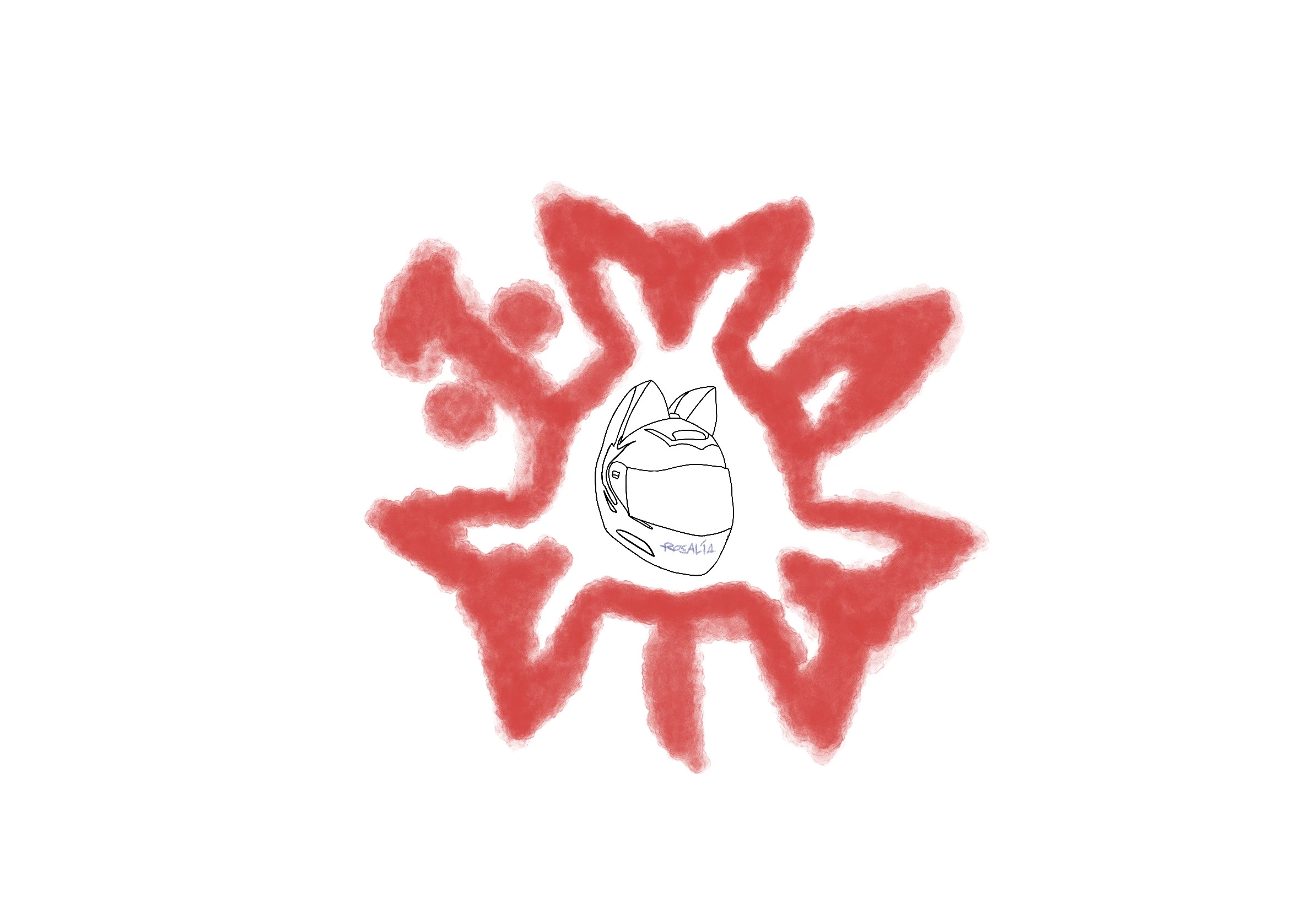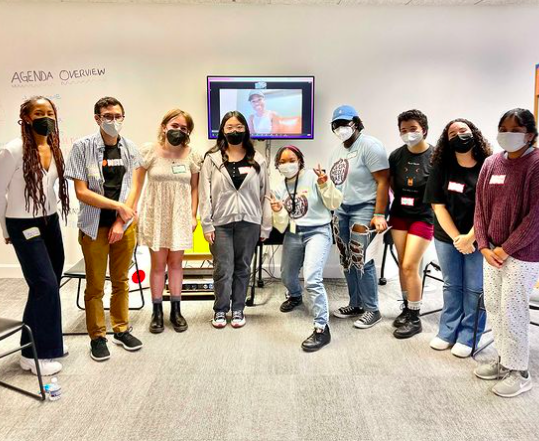Over the past few years, I have listened to more and more music, growing increasingly attached to the artists I love. With the limited freedom that comes with being a teenager, staying up for the release of new music – whether it be a song, mixtape, or album – has become one of my favorite pastimes. So as Spanish singer-songwriter Rosalía, aka Rosalía Vila Tobella, slowly made her way through the release cycle of her newest album, “MOTOMAMI,” I began to realize it would be something worth staying up for.
“La Fama,” or “The Fame,” was released late last year as the first single. The song follows the Bachata style, which originated in the Dominican Republic during the early 20th century and has gained popularity in recent decades. Like other Bachata works, “La Fama” has an enticing syncopated rhythm, sampling Rosalía’s vocals to create a sleek, romantic melody. The song describes fame as a person; she is “traicionera” (treacherous) and fleeting. Although it features the Weeknd and is produced to a tee, “La Fama” left me somewhat disappointed. It did not stand out – have the same flair – as other Rosalía songs.
Then, “Saoko” was released.
The word “saoco,” now a Puerto Rican slang term, originated in Africa and means “movement.” And man, does “Saoko” move. It is fast, high energy. The bass is rough and solid. Rosalía speaks quickly, describing the transformations that she – and the things around her – are going through.
“Eh, yo soy muy mía, yo me transformo
Una mariposa, yo me transformo”
“I’m very myself, I transform myself
A butterfly, I transform myself”
She is not breathless; the quick vocal cuts show she does not have time to breathe. As the song moves on, a piano enters. First, with a single high note. Next, with a low note. Then, the interlude begins. The hard beat stops, replaced by the sounds of popping champagne and relaxed conversation over drinks. It is a quick touch of relaxation and sophistication, a hint of the Rosalía that the public has celebrated her past two album releases. As quick as it comes, it’s gone, and the beat returns. Layered voices bubble up, the drums rise to a crescendo, and the song ends.
Something about “Saoko” – the jarring synth, the break-neck speed – drew me in, not just to the song, but to “MOTOMAMI” overall. It was a stark contrast from most everything Rosalía had put out before, but it seemed to me to be the most her. Suddenly, “La Fama” and “Chicken Teriyaki” seemed to make more sense.
As it drew closer and closer to release day, my excitement grew. “Saoko” quickly became my most played song of the month, flying up the ranks of top songs of the year. Weeks drew to days drew to hours. And finally, with my anticipation at a buzzing peak, “MOTOMAMI” released.
It did not disappoint.
“Saoko” is the first track. As the album’s ethos condensed into one shape-shifting frenzy, the song is the perfect opener. “Candy” is next.
It begins with a lighter, moodier synth. Rosalía’s voice is faded, more subdued. When the beat cuts in, it is sharp, almost metallic; there is a noticeable dreamlike quality. Where “Saoko” visualized the intensely confident, brusque side of Rosalía, especially in its spectacularly directed video, “Candy” is the other side, more delicate and introspective. “Candy” speaks of heartbreak, alluding to the abuse of “El Mal Querer” with lyrics that delve into moving on from a former partner’s abuse:
“Ya no te quiero como antes
Me rompiste, pero solo en parte”
“I don’t love you like I used to
You broke me, but only partly”
“Como un G” is another song that illustrates yearning and pain. Like in “Candy,” Rosalía finds herself thinking about a past relationship. She’s moved on, or at least says she has. But like the rest of us, her mind sometimes wanders. Autotuned vocals and a powerful chorus swell to create a relentlessly aching pull. Although most of the lyrics flew over my head upon first listen, “Como un G” still swallowed me whole.
That is one of the things I find so special about “MOTOMAMI.” You do not need to speak Spanish fluently, or even at all, to be impacted by it. Though the lyrics help to put the songs into perspective, the album’s provocative production – almost chaotic in its variety – makes them impactful regardless.
And what a better song to demonstrate this production variety than “CUUUUuuuuuute.” Admittedly, when I first saw it on the tracklist, I giggled. It reminded me of the all-caps keyboard smashing I do to convey strong emotions over text. The song is fittingly cheeky. It begins with a voice singing numbers up to 21. The last two numbers, “twenty, twenty one,” work in two ways: first, obviously, to count, and second, to call back to the year that most of “MOTOMAMI” was finished – the year that Rosalía’s transformation became complete.
As the song reaches its peak, a dramatic shift takes place. The beat cuts out, and Rosalía breaks into a belt with a grand piano pounding out chords behind her. She sings about following butterflies, once again referencing MOTOMAMI’s physical manifestation of – and her desire to seek out – change. And change again, it does; the last word of her chorus repeats, and the song flies forward as it did before.
As “MOTOMAMI” continues, flitting its wings in a flurry of synths, ballads, raps, and vocal cuts, the album’s message appears like a mass of butterflies condensing into a beautiful picture. There is love and heartbreak. There is change and repetition. There is pain and recovery.
Though she has been performing for years, Rosalía’s growth into a superstar has been sudden. In songs like “Diablo,” Rosalía displays the voice of her most vocal critic – herself. “La que sale por TV/No es la que yo conocí | The one that’s on TV, she’s not the one I knew” Throughout “Diablo,” Rosalía’s inner demon shames her for her transformation, as her fans did during the “MOTOMAMI” rollout and upon its release. Rosalía’s diversion from the more conventional styles of her past two albums was sure to cause backlash, even more so when considering her position. As one of the most famous Spanish-speaking popstars, Rosalía harbors the expectations of her country’s people and her language’s people. The fans who expect her to continue making the same music she has always has her deviation in recent months as not just a disappointment, but an insult. And for Rosalía, these expectations and inevitable letdowns have put a weight on her, “De la noche a la mañana/No es que yo cambié/De la noche a la mañana/Mi vi’a se me fue | Overnight, it’s not that I’ve changed/Overnight, my life left me.”
Revisiting “La Fama” – and listening to songs like “G3 N15” which details the dangers of Hollywood and isolation during the pandemic – it is clear that despite Rosalía’s confidence in “Saoko” or ironic fun in “Chicken Teriyaki,” her transformation in “MOTOMAMI” has caused some trepidation. But despite the repeated backlash, “MOTOMAMI” was released, as were its more controversial videos. Critics and fans alike quickly hailed it as a masterpiece, a strong contender for Album of the Year, even of the decade.
For me, “MOTOMAMI” is a lot of things. It is a masterclass in evocative production and blended styles. It is a story of fame and vulnerability, of being unafraid to transform into one’s true self even when it seems like the world is against you. And it is a lesson that there is a wide, wide world out there. Beyond the barriers of language and culture and countries, there are artists taking risks, bending the rules, and revolutionizing music.
“MOTOMAMI” was the first Spanish-language album I ever waited for, and now, after quickly becoming one of my favorite albums of all time, I know it will not be my last.




